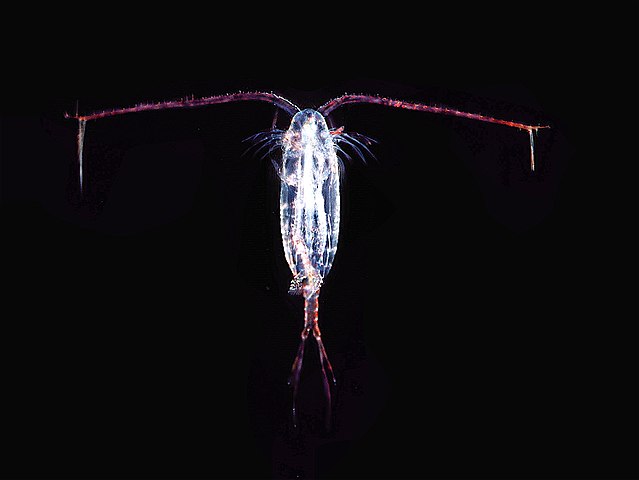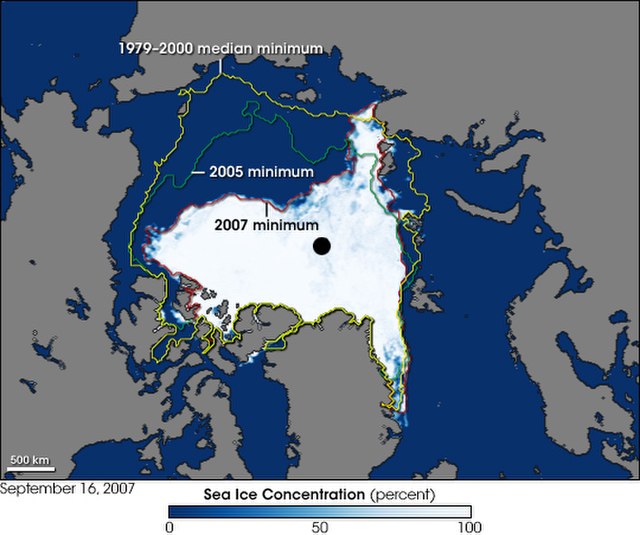The Northwest Passage (NWP) is the sea lane between the Atlantic and Pacific oceans through the Arctic Ocean, along the northern coast of North America via waterways through the Arctic Archipelago of Canada. The eastern route along the Arctic coasts of Norway and Siberia is accordingly called the Northeast Passage (NEP).
The various islands of the archipelago are separated from one another and from Mainland Canada by a series of Arctic waterways collectively known as the Northwest Passages, Northwestern Passages or the Canadian Internal Waters.
Northwest Passage routes
Envisat ASAR mosaic of the Arctic Ocean (September 2007), showing the most direct route of the Northwest Passage open (yellow line) and the Northeast Passage partially blocked (blue line). The dark grey colour represents the ice-free areas, while green represents areas with sea ice.
Chart of the World showing New Route (the Canadian Pacific Railway) through Canada between England, China, Japan, Australasia and the East (1886)
9 August 2013
The Arctic Ocean is the smallest and shallowest of the world's five major oceans. It spans an area of approximately 14,060,000 km2 (5,430,000 sq mi) and is known as one of the coldest of oceans. The International Hydrographic Organization (IHO) recognizes it as an ocean, although some oceanographers call it the Arctic Mediterranean Sea. It has also been described as an estuary of the Atlantic Ocean. It is also seen as the northernmost part of the all-encompassing World Ocean.
Thule archaeological site
A copepod
Sea cover in the Arctic Ocean, showing the median, 2005 and 2007 coverage
On the sea ice of the Arctic Ocean temporary logistic stations may be installed, Here, a Twin Otter is refueled on the pack ice at 86°N, 76°43‘W.








